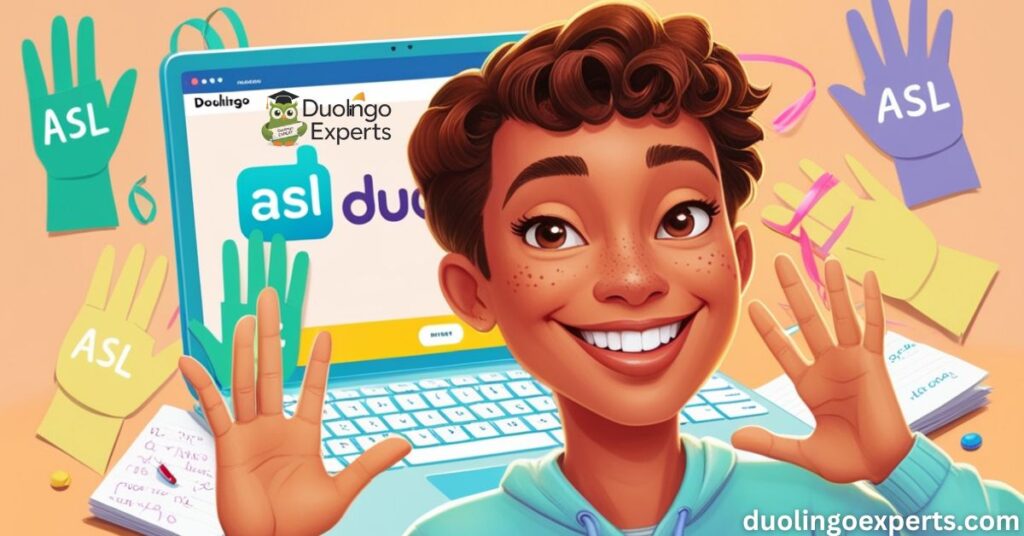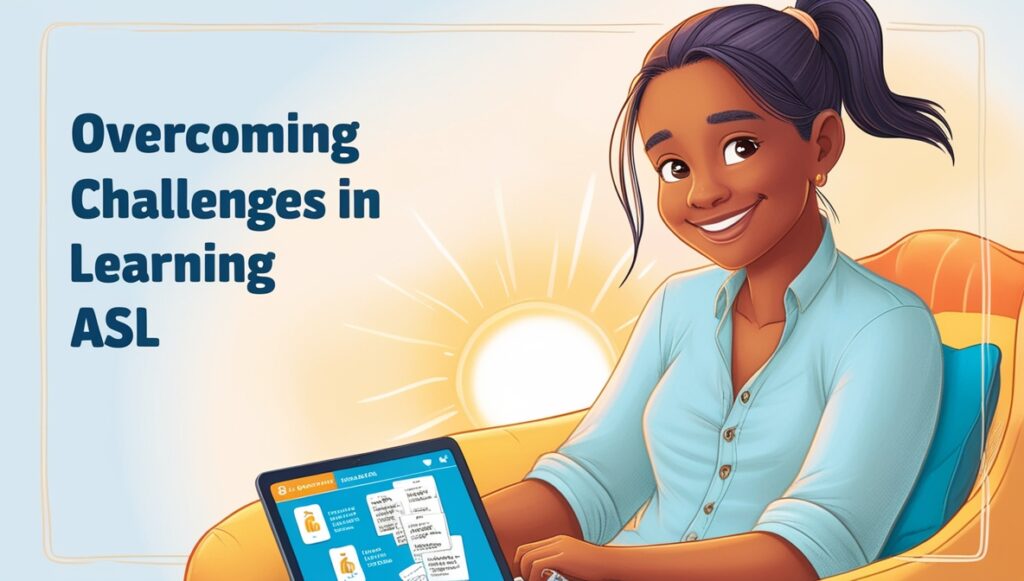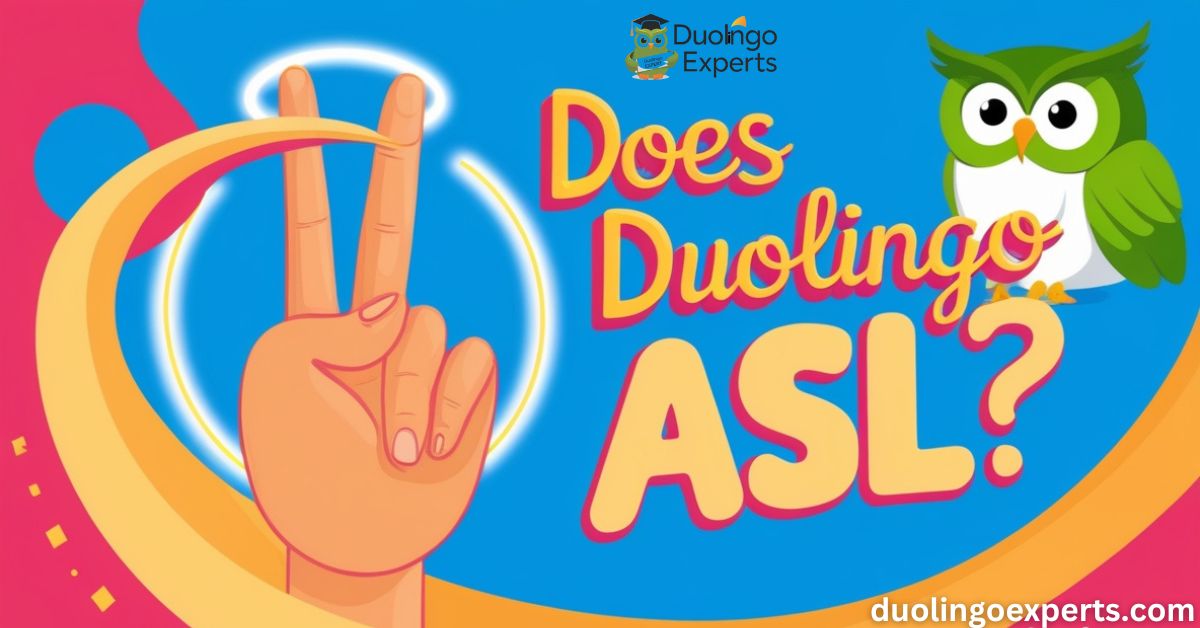American Sign Language (ASL) is a vital language within the Deaf and hard-of-hearing communities, and learning it can open up a world of new connections and opportunities. If you’re looking to start learning ASL or improve your skills, Duolingo’s ASL course offers an accessible, interactive, and gamified way to do so. In this guide, we’ll dive deep into everything you need to know about learning ASL on Duolingo, from its features to strategies for success, and provide tips for making the most of this free ASL learning app.
Duolingo ASL Course Overview
Duolingo’s American Sign Language (ASL) course is one of the most innovative language learning tools available today. The course is designed to teach you basic ASL signs, vocabulary, and grammar using visual and interactive methods. Duolingo’s success in language learning stems from its gamified approach, where learners earn points, complete levels, and stay motivated through various game-like features.
The ASL course on Duolingo is structured for beginners but offers content that is useful for learners at different stages. Whether you’re learning to recognize and understand signs or looking to enhance your expressive signing accuracy, Duolingo provides a blend of instructional content and interactive features to keep you engaged.
Key Features of Duolingo’s ASL Course:
- Interactive and Visual Learning: ASL is a visual language, so Duolingo uses a combination of images, animated signs, and real-time feedback to help learners grasp signs and gestures.
- Gamified Language Learning: Duolingo’s well-known gamification techniques, like earning experience points (XP), competing in leagues, and unlocking levels, keep learning fun and motivating.
- Free Access: The course is completely free, making it an ideal option for those wanting to learn ASL without breaking the bank.
- Daily Practice: Duolingo encourages consistent practice by setting daily goals and offering reminders to keep you on track with your learning.
- Progress Tracking: The platform allows you to track your progress, set learning goals, and assess how far you’ve come with their ASL lessons for beginners and beyond.
Features and Benefits of Duolingo’s ASL Course

Duolingo’s sign language learning platform isn’t just about memorizing signs; it’s about immersing yourself in the language. Below are the features and benefits that make Duolingo’s ASL course one of the best ways to start your learning journey:
1. Visual and Interactive Learning
ASL is a visual language, which means it relies heavily on hand shapes, facial expressions, and body movements to convey meaning. Duolingo’s course reflects this by using animated signs that you can watch and mimic. This is much more effective than traditional written language courses where words are primarily text-based. By visually seeing the signs and practicing them yourself, you start internalizing the language more naturally.
The course includes real-time feedback, which is crucial for learning expressive signing accuracy. For example, when you perform a sign in response to a prompt, the system will immediately tell you if it’s correct or not, allowing you to adjust and improve in real-time.
2. Gamified Learning Experience
Duolingo’s gamified learning system helps keep you motivated. Each lesson you complete earns you XP (experience points), and each milestone you hit unlocks new levels and challenges. This structure encourages learners to keep coming back every day, even when they’re feeling unmotivated.
Additionally, Duolingo offers streaks, where you can track how many consecutive days you’ve practiced, and crowns for mastering certain topics or skills. These gamified elements make learning ASL less of a chore and more of a fun challenge.
3. Free and Accessible
Unlike many other language learning platforms that charge for access to lessons or advanced features, Duolingo’s ASL course is completely free. This makes it an accessible option for learners on a budget who may not be able to afford expensive ASL courses or tutoring.
You can access Duolingo’s ASL lessons directly through the app, which is available on both iOS and Android, or through their website. Whether you’re learning on-the-go or at home, Duolingo’s flexibility ensures you can practice whenever it fits into your schedule.
4. Flexible Learning Path
With Duolingo, you can choose the pace at which you learn. If you’re a beginner, you can take it slow and review each skill until you’re comfortable before moving on to more advanced lessons. For more experienced learners, Duolingo offers the option to start where you left off or even take a placement test to assess your current skill level.
This structure helps learners feel empowered as they can progress at their own pace, achieving ASL learning milestones as they go.
5. Integrated Progress Tracking
Duolingo doesn’t just show you how much you’ve learned; it also shows you how much progress you’ve made and where to focus your efforts. The app tracks your progress in mastering skills, such as the ASL alphabet or basic greetings. This feature is helpful in identifying weak areas and allowing you to revisit lessons that need improvement.
Course Structure: What to Expect in Duolingo’s ASL Program
Duolingo’s ASL course structure is divided into several levels and skill areas. The course begins with the basics and progressively dives into more complex topics. Here’s an overview of what you’ll cover:
1. Starting with the Basics: ASL Alphabet and Numbers
The first thing Duolingo teaches you is the ASL alphabet (fingerspelling) and numbers. Understanding the alphabet is critical because it allows you to spell out words you don’t yet know and ask for clarification when communicating. This is followed by learning the numbers in ASL, which are commonly used in daily conversation.
In this stage, you’ll also be introduced to basic greetings and simple phrases, such as “hello,” “thank you,” and “how are you?” These foundational skills are essential for starting conversations and engaging in social interactions.
2. Building Vocabulary
Once you’re familiar with the basics, Duolingo guides you through a series of lessons on vocabulary building. You’ll learn to sign a wide range of topics, including:
- Common nouns (e.g., house, car, dog)
- Everyday verbs (e.g., eat, drink, go)
- Emotional expressions (e.g., happy, sad, angry)
- Prepositions (e.g., on, under, behind)
The key to effective sign language learning is repetition, and Duolingo uses various exercises to reinforce vocabulary through matching, recall, and interactive features.
3. Sentence Construction and Grammar
In the intermediate stages, Duolingo begins to teach you how to form sentences in ASL. It introduces simple grammar rules, such as word order and the use of non-manual markers (NMMs) like facial expressions to indicate questions or statements. Duolingo provides plenty of exercises to practice receptive skills in ASL, meaning understanding the signs other people make.
4. Advanced Conversations and Idioms
For learners who want to push their skills to the next level, Duolingo includes advanced ASL techniques. These lessons teach you how to have full conversations in ASL, introducing more complex sentence structures, idiomatic expressions, and culturally specific signs.
This stage also covers expressive signing accuracy, ensuring you can clearly communicate ideas through both handshapes and facial expressions.
Getting Started with Duolingo’s ASL Course
Setting Up Your Account
The first step to getting started with Duolingo is to set up an account. This is a simple process that requires only an email address or social media login. Once you’re logged in, you can select ASL as your target language.
Duolingo’s user-friendly interface will prompt you to choose your learning goals and set daily targets. For example, you might set a goal to practice for 10 minutes a day or complete a certain number of lessons.
Choosing Your Learning Goals
One of the best features of Duolingo is its ability to tailor the learning process to your needs. When you first sign up, Duolingo will ask you about your motivation for learning ASL. Are you a beginner or looking to practice specific skills? Setting your motivation level and learning goals allows the app to offer customized recommendations and activities that help you progress efficiently.
Effective Strategies for Learning ASL on Duolingo

While Duolingo offers an excellent structure for learning ASL online, the best way to succeed is by using smart learning strategies. Here are a few to help you make the most of your time on the platform:
1. Practice Every Day
Consistency is key when learning any new language, including sign language. Make it a habit to practice every day, even if it’s just for a few minutes. Daily practice ensures you keep building upon what you’ve learned and helps solidify new signs in your memory.
2. Use Interactive Features
Duolingo’s interactive features, like its forums, leaderboards, and challenges, allow you to connect with others who are also learning ASL. This interaction can help you stay motivated and learn from others’ experiences. Join discussions, ask questions, and share your progress to enhance your learning experience.
3. Focus on Both Receptive and Expressive Skills
Effective ASL learning involves both receptive skills (understanding what others sign) and expressive skills (signing clearly for others to understand). Make sure to balance your practice between the two. Receptive skills are especially important as they allow you to comprehend what others are saying in ASL.
4. Watch ASL Vlogs and Videos
Incorporating external resources such as ASL vlogs or video lessons can improve your comprehension and deepen your understanding of ASL culture. There are several online ASL resources that you can use in addition to Duolingo, including YouTube channels, podcasts, and blogs.
Overcoming Challenges in Learning ASL

Common Obstacles in Learning ASL
While Duolingo offers an excellent way to get started, there are still challenges to overcome when learning a visual language. Here are a few common obstacles:
- Difficulty with Expressive Accuracy: It can be challenging to master the precise handshapes and facial expressions required for effective communication.
- Limited Real-time Practice: Unlike other languages, ASL requires interaction with native signers to truly master it, which can be difficult when learning online.
- Complexity of Non-manual Markers: Understanding how to use facial expressions and body movements as part of your signs can be a complex concept to grasp for beginners.
Solutions and Workarounds
- Practice in front of a mirror to refine your facial expressions and handshapes.
- Engage with the Deaf community online through social media and forums to get real-time feedback.
- Supplement Duolingo’s lessons with live interaction through video chats or ASL practice groups.
Frequently Asked Questions
Is there an ASL app like Duolingo?
Yes, there are a few apps similar to Duolingo for learning ASL, such as ASL Bloom and SignSchool. These apps also offer interactive lessons, vocabulary building, and practice opportunities, though Duolingo stands out with its gamified approach and user-friendly interface.
Where can I learn ASL for free?
You can learn ASL for free through apps like Duolingo, which offers a comprehensive ASL course with interactive lessons. Additionally, websites like Lifeprint and YouTube channels dedicated to ASL also provide free video tutorials and resources for beginners.
What app helps you learn ASL?
Apps like Duolingo and SignSchool are great tools for learning ASL. Duolingo offers a gamified approach with interactive lessons, while SignSchool provides a more structured curriculum with video lessons and practice exercises for all levels.
What’s the best way to learn ASL?
The best way to learn ASL is through consistent practice with interactive apps like Duolingo. Engaging with the Deaf community and using video resources will also improve both your receptive and expressive skills.
Is ASL 1 hard?
ASL 1 can be challenging for beginners, as it requires learning a new visual language with unique grammar and handshapes. However, with consistent practice and immersion, most learners find it manageable and rewarding.
How to learn ASL on Duolingo?
To learn ASL on Duolingo, simply sign up for a free account and select ASL as your language. Complete interactive lessons, practice signs, and use the app’s gamified features to track progress and stay motivated.
Is ASL difficult to learn?
ASL can be challenging at first due to its unique grammar and reliance on visual cues like facial expressions. However, with consistent practice and immersion, most learners find it accessible and rewarding.
Conclusion
Can you learn ASL on Duolingo? Absolutely! Duolingo’s ASL course offers a solid foundation for beginners and intermediate learners alike, with its engaging gamified approach, interactive features, and free access. By using the app consistently and following effective learning strategies, you’ll be well on your way to building your ASL vocabulary, mastering expressive signing, and connecting with the Deaf community.
Whether you’re interested in basic ASL alphabet and numbers or more advanced techniques, Duolingo provides a flexible, accessible, and fun platform to learn at your own pace. Ready to start signing? Download Duolingo today and start your journey toward sign language fluency!
>>>Read Also: What Time Does Duolingo League End? Uncover the Exact Timing Here

DuolingoExperts, managed by MarkJohan, offers expert insights and tips for mastering languages. A tech-driven platform to enhance your learning experience.

